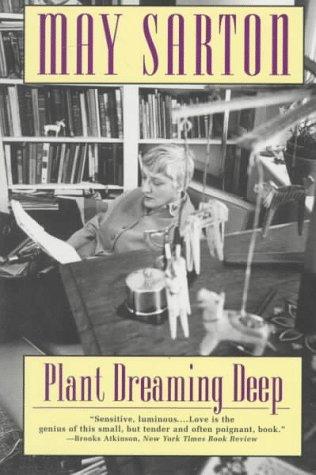May Sarton
By:
May 3, 2012

The year she turned 44, everything changed for MAY SARTON (1912-95). In 1956, the never-quite-successful poet and novelist separated from her longtime partner Judy Matlack; mourned the death of her father, historian of science George Sarton; and moved from Cambridge to a farmhouse in Nelson, N.H., to write, quite alone. One fruit of her time in Nelson was her first memoir, Plant Dreaming Deep (1968). (“Plant” is an imperative — plant your dreaming in this literary farmland!) The May of Plant Dreaming Deep cuts flowers every day and arranges them in her mother’s vases from the old country (Belgium). She writes poems, takes long walks, appreciates her eccentric neighbors. And more readers picked up the lovable journal of this version of May Sarton than did her latest, queerest novel, Mrs Stevens Hears the Mermaids Singing, or her most recent books of poetry.
But she found herself untruthful. Why do you think I live alone? she asks her readers. In Plant Dreaming Deep, “the anguish of my life here — its rages — is hardly mentioned.” And thus its corrective, Journal of a Solitude (1973), where we learn how the solitude’s life turns up fears and doubts like her New Hampshire fields turn up lumps of granite. May describes herself as the lonely house in Nelson, lit up against the winter, “a house with no walls.” “The effect is dazzling from the outside,” she writes, “just as my life seems dazzling to many people in its productivity, in what it communicates that is human and fulfilled, and hence fulfilling. But the truth is that whatever good effect my work may have comes, rather, from my own sense of isolation and vulnerability. The house is open in a way that no house where a family lives and interacts can be.” For Sarton, solitude is the empty room, not the light in it.
***
On his or her birthday, HiLobrow irregularly pays tribute to one of our high-, low-, no-, or hilobrow heroes. Also born this date: Pete Seeger.
READ MORE about members of the Partisans Generation (1904-13).
